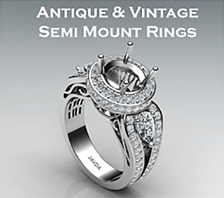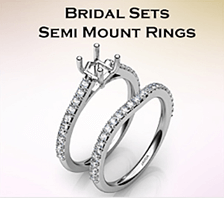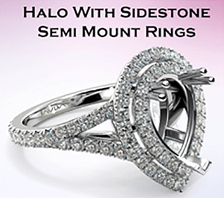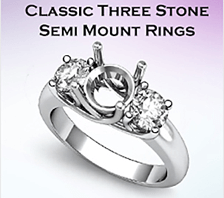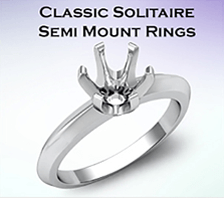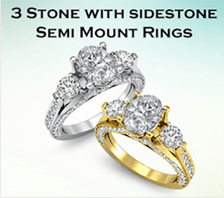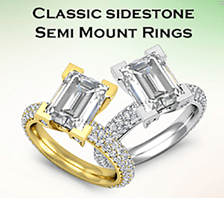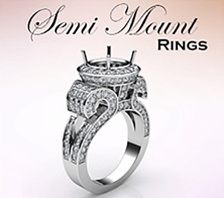- USA & CA : 1(800) 618-0057
- UK : 0800-158-8052
- Australia : 1800-195-871
Need help?
If you'd like to speak to an expert about selecting the right diamond for you, please call:
1-800-618-0057
[email protected]
DISCOVER INTERESTING FACTS ABOUT YOUR FAVORITE GEMSTONES, AND LEARN ALL ABOUT GEMSTONE CUTS, CLARITY, COLOR AND MORE
Gemstones are available in an innumerable variety. In fact, some varieties of gemstones like sapphire arrive in many different colors like blue, yellow and so on. Let us study a few popular gemstones in detail.
QUALITY FACTORS
Like diamonds, there are many factors that affect the quality of a gemstone.Let us study each of these factors in detail and understand how they help us judge the gemstone’s quality.
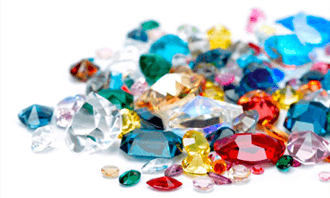
COLOR
For every gem variety, color is the most important value factor which is evaluated in a similar way for each gem. The jewelry industry recognizes the quality of gemstones by these three components of color:-
• Hue: Hue is the basic or unique color of the gemstone. In other words, hue is described as the shade, tint or sensation of a color.
• Tone: Tone represents the depth of a gemstone color, ranging from colorless to black. In other words, tone is described as the relative lightness or darkness of a Hue. Gemstone tone is described as ‘light’, ‘medium-light’, ‘medium’, ‘medium-dark’, and ‘dark’. Medium-light to medium-dark tone is considered as most valuable range.
• Saturation: Saturation is a measure of the intensity or purity of a gem's hue or color. A gemstone that is free of gray or brown hues is considered to be strongly saturated and is more valuable than a gemstone with lower saturation. Saturation often decides the cut of a gemstone. A high-quality gemstone cut delivers an even color throughout the stone and exposes the fewest inclusions.
Gemstones come in all possible colors of the spectrum, but also one gemstone itself can come in variety of different hues and shades. Garnet for example, is available in every possible color, while Sapphires are also available in shades of pink and yellow apart from the usual blue.
Note: Gemstones may have been treated to improve their appearance or durability and may require special care.
CLARITY
Clarity is a term used to describe the absence or presence of flaws inside or on the surface of a gemstone. A flawless gemstone is rare and usually expensively priced. Most gemstones have inclusions, or tiny mineral flaws, that can be seen under magnification or by the careful eye. A gemstone may have inclusions, cracks, spots, clouds, or any other blemish or imperfection.
For diamonds, Clarity Grade Scale from F (flawless) to I3 (included 3) is used whereas for other colored gemstones a different grading scale is used. Colored stones have different habits of clarity, so that they are classified into three ‘Types’, which are defined as under:
Type I
Type I colored stones include stones with very little or no inclusions. This category can include Aquamarine, Blue Topaz, Zircon, Morganite, Tanzanite, etc. Clarity in the Type I group is classified as VVS (minute to detectable), VS (minor), SI1 (noticeable), SI2 (obvious) or I (included)
Type II
Type II colored stones include stones that often have a few inclusions. This category can include Corundum, Garnets, Iolite, Peridot, Quartz (Amethyst, Citrine, Ametrine), Ruby, Sapphire, Spinel, etc. Clarity in the Type II group is classified as VVS (minor), VS (noticeable), SI1 (obvious), SI2 (prominent), or I (prominent, affecting appearance).
Type III
Type III colored stones includes stones that usually always have inclusions. This category can include Emeralds, Tourmaline, etc.
Clarity in the Type III group is classified as VVS (noticeable), VS (Obvious), SI1 (prominent), SI2 (more prominent), or I1 (affecting appearance or durability).
INCLUSIONS AND VALUE
As gemstones are formed by natural process, they may include some impurities within them called as ‘inclusions’. These inclusions are the individual characteristics of every stone and hence are also referred to as ‘birthmarks’. Few inclusions become a part of the gemstone character and add an exotic touch of design to the gemstone. Emerald and Red Tourmaline are seen with such natural inclusion, whereas Citrine, Green Tourmaline and Aquamarine are usually flawless. Very small inclusions are invisible to the naked eye, making the gemstone rare and equally expensive.
CARAT WEIGHT AND RARITY
Gems are sold by their weight and not by their size. The measurement used to weigh them is carat, which is one-fifth of a gram. Different gemstones have different densities (mass per unit volume), so two gems that appear to be of the same size may actually have different weights. For example, a one-carat Emerald and a one carat Ruby may have same weight but will not have the same size because each is a different mineral with a different density. Emerald, Ruby, Sapphire and Tsavorite Garnet are some gemstones which rarely are seen in large sizes. Large sizes of these gems demand very high price per carat when compared to its smaller counterparts. Whereas Amethyst, Citrine, Blue Topaz and Amber are easily available in large sizes and therefore quote normal price per carat like their smaller sized stones.
CUT AND BEAUTY
Gemstones are a masterpiece of nature, but it's the skilled hard work of the gem cutter that unleashes its Brilliance (amount of white light returning to the eye from a gemstone) and Beauty (the visual appeal which is a combination of color, cutting quality and surface appearance).
When we talk about cut we refer to two different things.
• The three dimensional shape it is designed in, e.g. the marquise shape, round cut, oval cut, etc.
• The brilliance and beauty reflected by the quality of cutting associated with the precisions of the angles and proportions of workmanship. It is the way a gemstone reflects light and captures attention.
Symmetrical cuts and colorful light reflections with no dark or washed out areas represent the ideal characteristics of a good cut while an asymmetrical cut talks of its low quality.




 US & CA :
US & CA :
 Live Chat
Live Chat
 Engagement Rings
Engagement Rings 













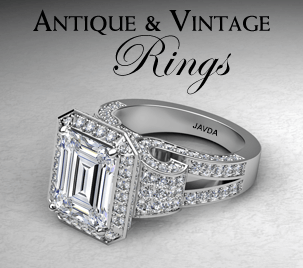
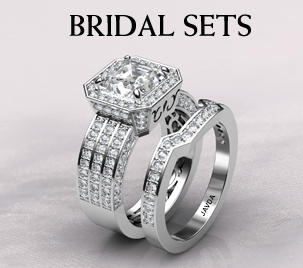
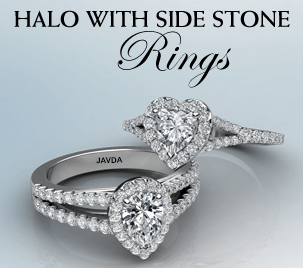
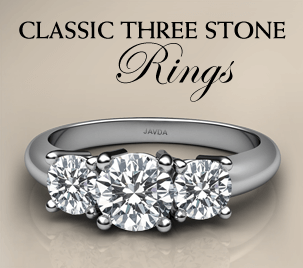
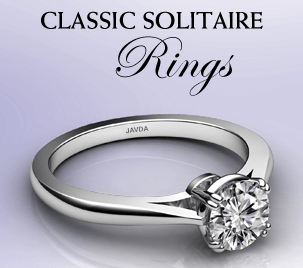
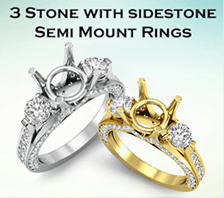

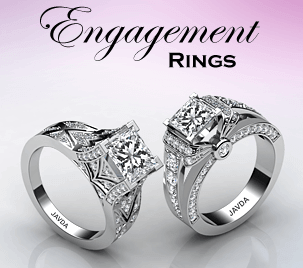
 Pendents
Pendents 










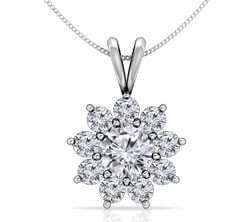
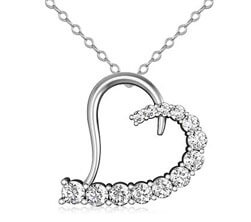
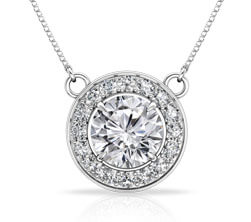
 Natural Diamond's
Natural Diamond's 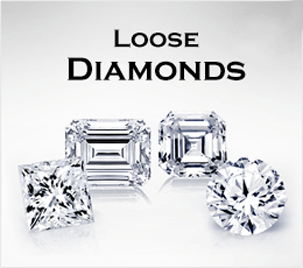
 Wedding Bands
Wedding Bands 








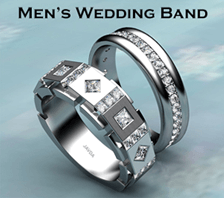
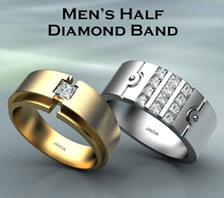
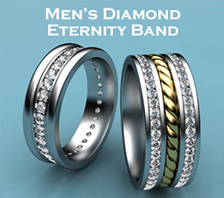
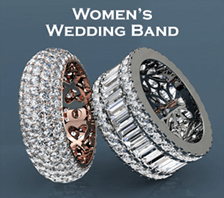
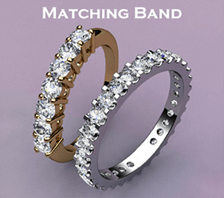
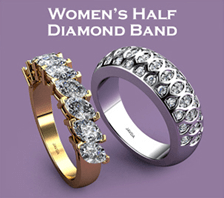
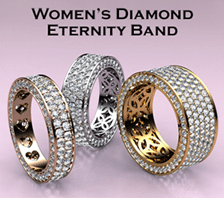
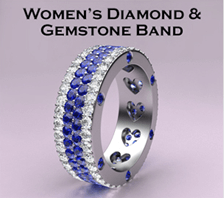
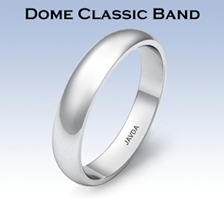
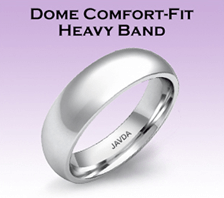
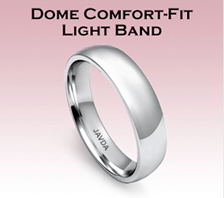
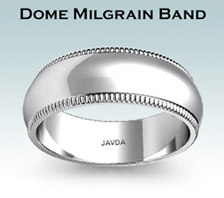
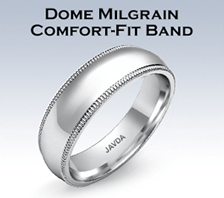
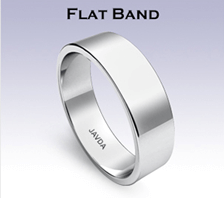
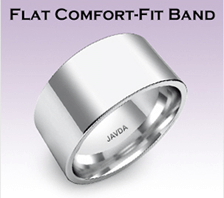
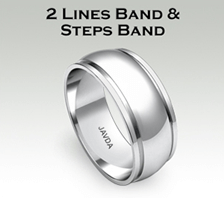
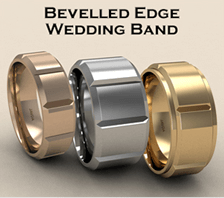

 Semi mount rings
Semi mount rings